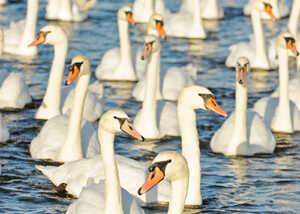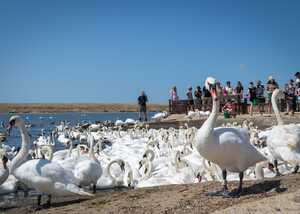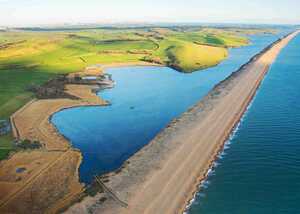The Swannery Today

Best attractions in Dorset
Located on the Jurassic Coast the Swannery is considered to be one of the best things to do in Dorset. It is a popular and firm favourite for both visitors to the area and with local people too. Whether it is a planned visit or a spontaneous day out, the Swannery continues to surprise and delight visitors.

Managing the colony
The Swannery is now home to the only remaining managed colony of Mute Swans in the world. The herd of swans is still presided over by a Swanherd but unlike in monastic times a small dedicated team now work alongside them.
Some years, over 150 pairs of Mute Swans nest on this site. This colonial style of nesting is very uncommon in Mute Swans, but it has occurred here on a regular basis for over 600 years.
The vast eelgrass beds in the shallow brackish waters of the Fleet attract a very large number of swans (up to 1,400 in winter), but the only suitable nesting site in the vicinity of the lagoon is here at the Swannery. The site’s attributes include fresh water (essential for cygnets) and reeds, which provide useful nesting material.

Nature reserve
The Swannery is located at the Northwestern end of the Fleet - the longest tidal lagoon in the British Isles.
The Fleet has extensive Eelgrass beds - an important food source for the swans and many other waterfowl. The salinity of the lagoon varies from pure seawater at the Portland end to freshwater at the Abbotsbury end. The swans need freshwater for their cygnets which is why they congregate at the Swannery to nest. The freshwater also promotes the growth of reeds – an ideal swan nesting material but also an important crop for the thatching of local cottages.
Today the reedbeds are managed for both thatching and for the important wildlife this unique habitat supports. The collection and reporting of data is also an important part of the Swannery’s role.
